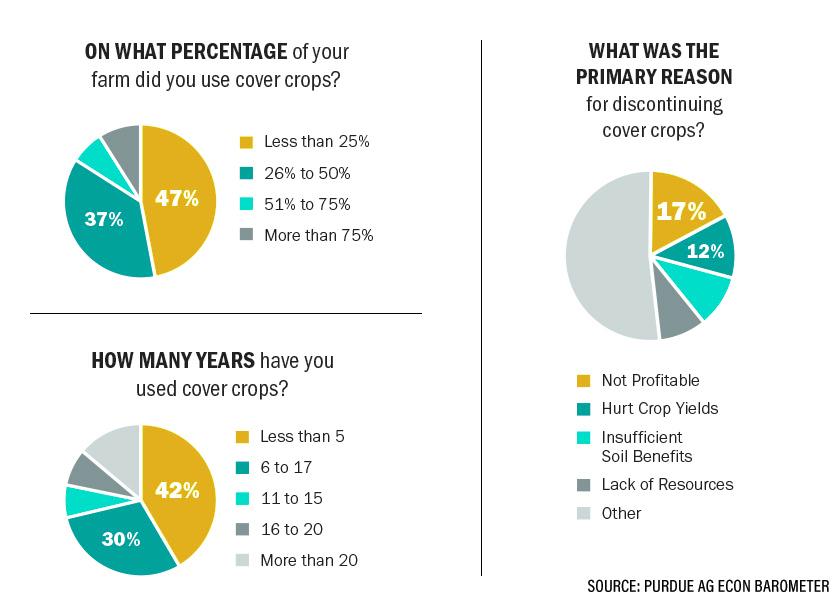Financial Discounts for Regenerative Ag

Pilot programs are exploring the opportunity to offer farmers improved financing terms based on their adoption of regenerative agriculture. The goal is to bring an expanded scale via financial incentives structured differently than dollars per acre for adoption.
Money Back To the Farmer
In March, Indigo and Federal Agricultural Mortgage Corporation (Farmer Mac) introduced their incentive program to provide a 0.25% interest rate rebate to U.S. farmers with eligible Farmer Mac farm mortgages to maintain existing or adopt new sustainable practices (reduced tillage, cover crops, crop rotation or nitrogen optimization) and provide annual agronomic data.
Currently the Indigo and Farmer Mac program is available in Illinois, Indiana, Iowa, Minnesota, Missouri, Nebraska, North Dakota, Ohio and South Dakota.
“Farmers join the program for three years, during which time they benefit from an interest rate rebate and are also qualified for additional revenue by joining a specific Indigo sustainability program, such as Market+ Source or Carbon by Indigo,” says Roman Tarnovsky, vice president and global head of sustainability markets at Indigo.
Via this partnership, lenders determine farmer interest and refer farmers to an Indigo representative. The companies would like to expand the program.
“We’re interested in studying practice adoption, market-based outcomes and how mortgages might play a role in the future of agricultural practice changes. Indigo has been a valuable partner in trying to better understand the risk and return profile of regenerative and sustainability practice adoption, and we continue to fine-tune program parameters in order to learn more about how the market values these activities,” says Jackson Takach, chief economist and senior director at Farmer Mac.
Promoting Resiliency
“We recognize there is missing infrastructure and missing economic incentives to support producers in the U.S. who are using soil health practices,” says Aria McLauchlan, co-founder of Land Core, a 501c3 organization with the mission to advance soil health policies and programs.
Working on the hypothesis that adopting such practices builds resiliency to extreme weather, Land Core is partnering with Compeer Financial to use the science to build programs and explore productivity impact on farmers who use cover crops, crop rotations and reduced tillage.
This is a new project built on a predictive risk model factoring in the benefits of soil health-focused management practices, while accommodating for the natural variability in agriculture.
“This is designed to be a practical tool for lenders, insurers and practitioners,” says Harley Cross, co-founder and director of strategy at Land Core. “There’s a real opportunity to acknowledge the work being done by the farmer and quantify the benefits while also giving needed financial discounts.”
He offers some analogies: Good drivers receive lower insurance rates. Non-smokers pay less for their life insurance.
“But those who have healthy soil aren’t getting a good soil discount even though they are de-risking the entire supply chain — bankers, investors and more,” he says.
Land Core’s goal is to provide data to help direct specific offers to expand regenerative agriculture in geographies with lower adoption or greater opportunity. Its database is layered with satellite imagery, soil maps, weather data, etc., to inform offers on a county-by-county level.
“We are working with financial institutions to explore which offers are going to be the most effective, with ideas such as reduced financing rates, deferring payments for the purchase of cover crop seed, or covering the cost of education and technical assistance for producers,” Cross says.
The Land Core Risk Model tool will be open source and available for non-commercial use. So far, the tool’s modeling has focused on the risk mitigating effects of soil health practices in dry conditions for corn.
Land Core aims to expand over nine states in the next three years. Its leaders say they think structuring the financial offers is an effective way to reach farmers because it’s not asking them to sign up for another program.
“We see opportunities for farmers to get more from investments they’ve made in soil health,” McLauchlan says. “The goal is to quantify the risk reduction and recognize the intrinsic value farmers are creating.”







